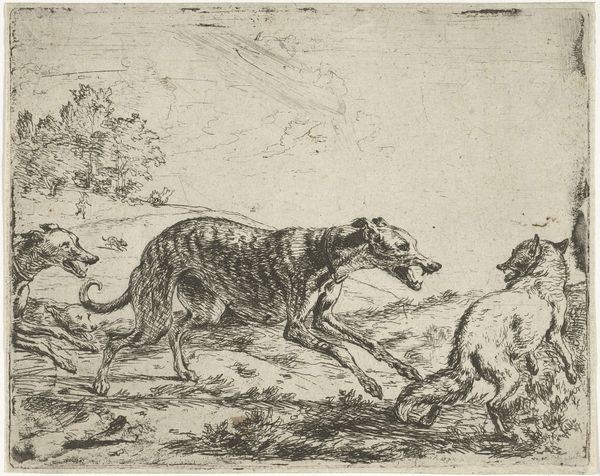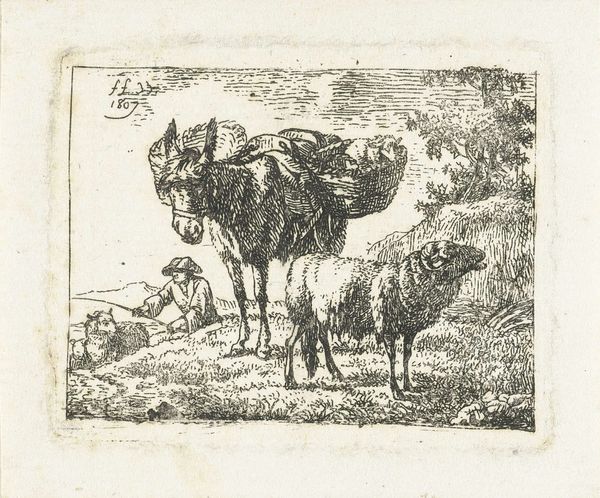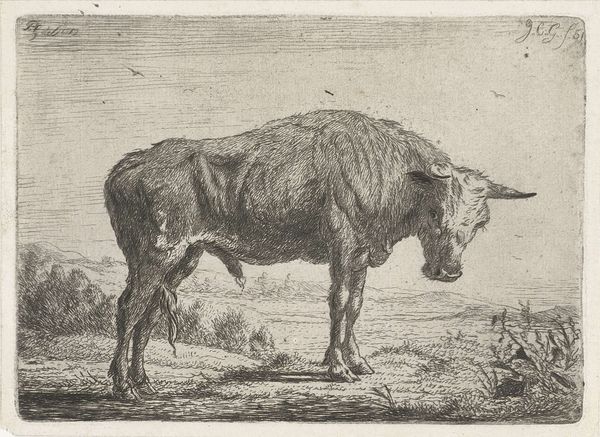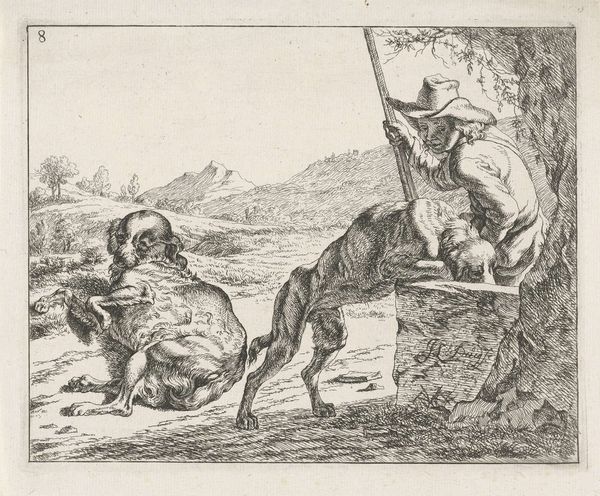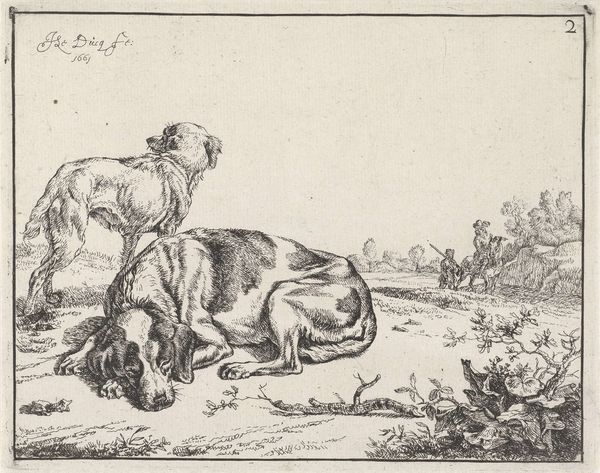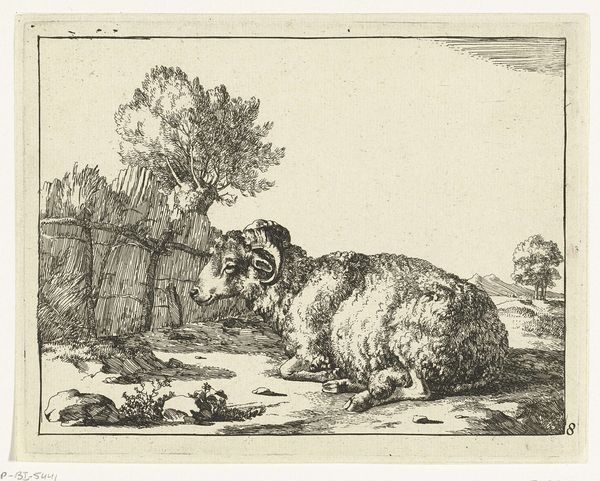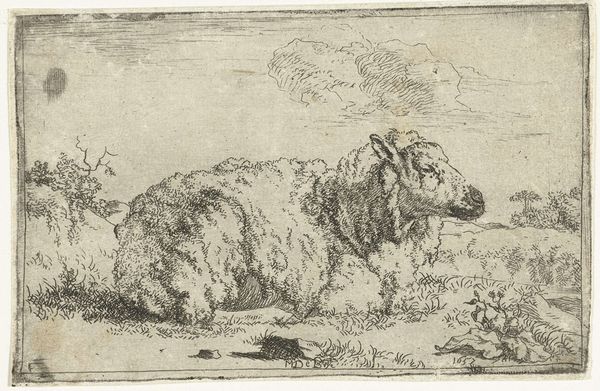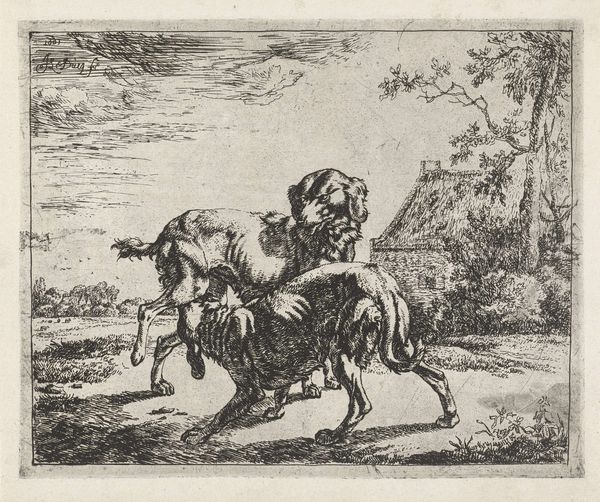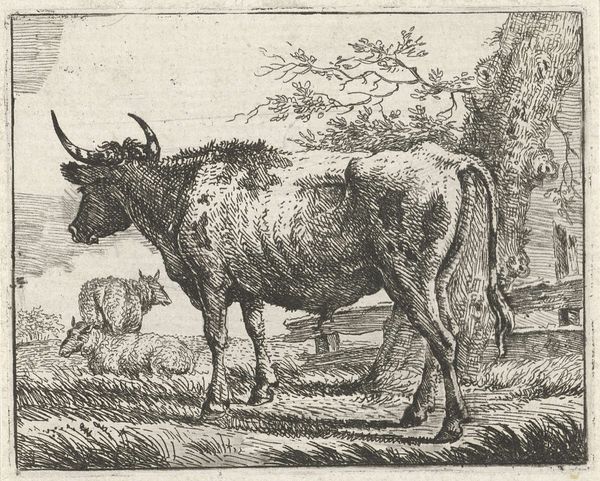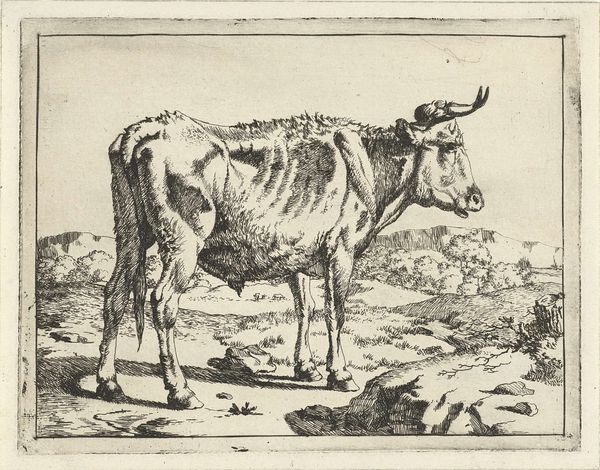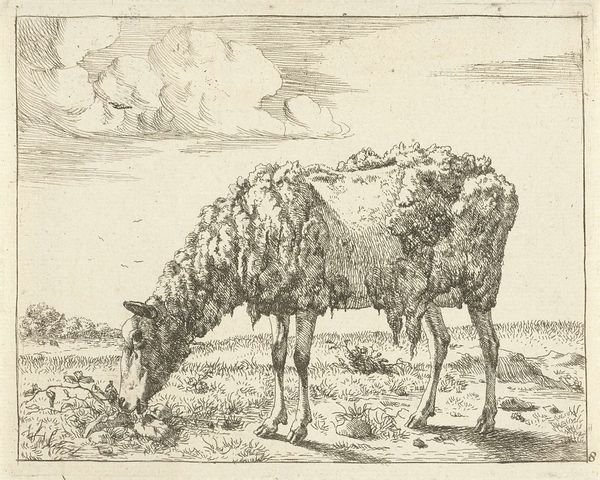
drawing, etching
#
drawing
#
animal
#
dutch-golden-age
#
etching
#
dog
#
genre-painting
#
realism
Dimensions: height 126 mm, width 149 mm
Copyright: Rijks Museum: Open Domain
Curator: The immediacy of this etching, simply titled “Standing and Sleeping Dog,” strikes me right away. There's an unaffected quality, a sense of a quick sketch captured in a durable medium. Editor: It certainly feels unassuming. The way the lines delineate the dogs almost seems tender, wouldn’t you agree? I am fascinated by how the animals evoke symbols that endure over time, tapping into cultural memories we have of the role of dogs in society. Curator: Well, considering that Johan le Ducq made this drawing sometime between 1639 and 1677, situating him squarely within the Dutch Golden Age, one has to consider what a "genre painting" like this represented at the time. The Netherlands were rapidly urbanizing, with evolving class structures, how might this type of imagery reflect social tensions? Editor: Perhaps as emblems of loyalty or even simple companionship amidst the burgeoning capitalist class, and that visual association certainly lingers to this day, don't you think? The standing dog, alert and watchful, versus the sleeping one, embodying ease, comfort— Curator: Exactly! It suggests an interesting binary when one thinks about the social dynamics. Who has the right to leisure, and who is perpetually on guard, or perhaps burdened with vigilance? Are the dogs metaphors? Editor: What strikes me are the naturalistic depictions of the dogs, echoing similar representations we still use today. The textures created by the etching amplify their animal presence, a visual shortcut for domesticity. What about its context allows this cultural thread to resonate so vividly across the centuries? Curator: This piece exists within a specific socio-historical framework. By analyzing the societal values that underpinned genre painting in the Dutch Golden Age, we can interpret these seemingly simple images. It reveals the intersectional ways we understand power, labor, and class identity. Editor: So, an innocent rendering of dogs can also point to profound realities in society? Even after hundreds of years, a piece of cultural insight remains alive. Curator: Precisely. It's about unveiling how seemingly simple art refracts the complexity of identity through the ages. Editor: Wonderful. Now, when I look at it again, it calls to mind the powerful enduring presence of symbols, connecting past and present with visceral immediacy.
Comments
No comments
Be the first to comment and join the conversation on the ultimate creative platform.

